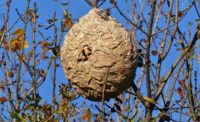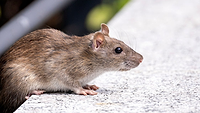Supplier's Perspective
4 steps to prep for rodent season

Pest management is a perennial task in food-processing environments. The pests of concern may vary, but span all food-processing segments, rodents take top billing as a pest of concern. Across North America, pest management experts have noted an uptick in rodent activity in the warm weather months of 2019 — levels typically seen in the fall. Unfortunately, this could mean an increase in rodent issues for processors this fall and winter.
What’s behind the rodent boom? A combination of factors: construction in urban areas, continued land development, warmer winters that don’t allow for a natural die-off of pests and a general malaise about structural and sanitation concerns that attract rodents.
While processors may not be able to control three out of four of those factors, they can rectify the last. Don’t be complacent. Now is the time to take steps to secure your facility against rats and mice. Rodent-proofing should be part of a routine maintenance plan. It’s as important as cleaning and sanitizing equipment.
Before cool weather sets in, take these four actions to prepare your facility.
● Do a thorough exterior inspection and seal openings before the first frost. Mice can squeeze through holes as small as ¼-inch. Seal cracks with pest-proof material such as 1/8-inch wire mesh, flashing, hardware cloth or silicone caulk. Look high and low. Don’t forget to inspect the roof; rodents can climb.
● Pay attention to changes to the structure since last winter. Temperature swings and construction can leave structural gaps caused by expansion that give rodents a perfect opportunity to enter.
● Trim back vegetation. This is one of the best rodent deterrents available. Leave at least an 18-inch vegetation-free zone between structures and landscaping. Clean out under shrubbery to eliminate rodent hiding places. Ensure trees are trimmed back away from rooftops.
● If a facility has seen increased activity this summer, increase the rodent protection. Install additional rodent management devices to help monitor for activity. A program should be dynamic, and device placement needs to match the risk and data. Some pest-management companies now offer digital rodent monitoring that can alert 24/7 to any rodent activity.
Pay attention to the environment, neighboring properties and process changes in the areas around a facility and be in communication with the pest management provider about them. This knowledge can help the provider implement the best preventive measures. While this isn’t a comprehensive list, these types of activities can increase rodent pressures:
● Has there been unusual weather or flooding this year?
● Is there construction or renovation happening nearby, even as far as a mile away?
● Is it time for seasonal mowing in neighboring or adjacent fields?
● Is there a new neighbor on adjacent properties?
● Have suppliers changed recently?
With increased vigilance and a scheduled preventative maintenance plan, any facility can prepare now against an onslaught of rodents this winter.
Looking for a reprint of this article?
From high-res PDFs to custom plaques, order your copy today!





